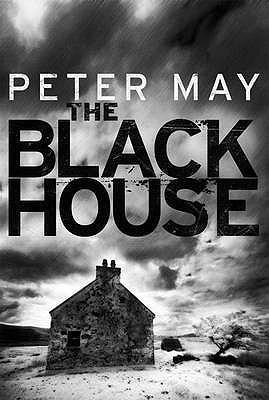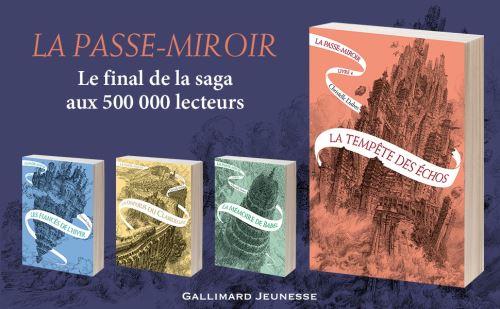
Archive for library
bibliothèque Schœlcher [jatp]
Posted in Books, Kids, pictures, Travel with tags abolitionist, Antilles, Caribean sea, Fort-de-France, jatp, library, Martinique, Pierre-Henri Picq, slavery, vacations, Victor Schœlcher on October 26, 2023 by xi'an
book reviews
Posted in Books, Kids, Mountains, pictures, Travel with tags book review, chess, Isle of Lewis, Jorge Luis Borges, Lewis and Harris, library, Outer Hebrides, peatbogs, presbyterians, Scotland, steampunk, The Name of the Rose, young adult books on May 8, 2023 by xi'an“I believe neither in luck nor in destiny, I trust only the science of probabilities. I have studied mathematical statistics, combinatorial analysis, mass functions, and random variables, and they never have held any surprise for me.”
Over the past weeks, I read both second and third volumes of The Mirror Visitor series, by Christelle Dabos, keeping to the (remarkable) English translation. With a new dramatic challenge and a new location facing the heroine in each volume, following the classical unities!, although the overall goal of defeating “God” remains. Enjoying both the universe building and (mostly) the heroine’s perspective, much less the repeating pattern of her interactions with her almost abusive husband. And even less the communitarianisation of people by their magical skills (albeit a common flaw in fantasy literature!). While possibly slowing down, the third volume remains a page turner and reenacts another common feature of YA fantasy books, namely the magician school, albeit with a welcome distanciation from Ophelia who suffers it to reach the “finis Africae” of the Babel library (which obviously reminded me of Borges). And still enjoying the covers by Laurent Gapaillard!
 I also read Peter May’s Black House, a detective story about an perplexing (of course!) murder, coupled with a trauma reminisced by the main (?) character (or the reverse). The scene is the Isle of Lewis, Scotland, part of the Outer Hebrides along with Harris, of tweed fame. And quite distinct from the rest of Scotland. Inducing well-done if somewhat repetitive descriptions of the landscape and the weather. Actually the book insists way too much on these peculiarities and seems intent in going through all of them (crofters, chessmen, peat harvesting, rigid Presbyterianism, Gaelic speakers, and gannet hunting). Nonetheless, it presents an interesting triangle between the main characters and, while the reasons leading to the murder require some suspension of belief due to the excessive accumulation of terrible deeds, the reminiscence (and lack thereof) of the adult detective of his childhood is well done, although he does not emerge that well from the unraveling of his younger self, even when comparing with other Tartan noir characters like McIlvanney’s Laidlaw and Rankin’s Rebus. I hope the following volumes keep the same tension, despite the idiosyncrasies of the place being exhausted…
I also read Peter May’s Black House, a detective story about an perplexing (of course!) murder, coupled with a trauma reminisced by the main (?) character (or the reverse). The scene is the Isle of Lewis, Scotland, part of the Outer Hebrides along with Harris, of tweed fame. And quite distinct from the rest of Scotland. Inducing well-done if somewhat repetitive descriptions of the landscape and the weather. Actually the book insists way too much on these peculiarities and seems intent in going through all of them (crofters, chessmen, peat harvesting, rigid Presbyterianism, Gaelic speakers, and gannet hunting). Nonetheless, it presents an interesting triangle between the main characters and, while the reasons leading to the murder require some suspension of belief due to the excessive accumulation of terrible deeds, the reminiscence (and lack thereof) of the adult detective of his childhood is well done, although he does not emerge that well from the unraveling of his younger self, even when comparing with other Tartan noir characters like McIlvanney’s Laidlaw and Rankin’s Rebus. I hope the following volumes keep the same tension, despite the idiosyncrasies of the place being exhausted…
library, whatzat???
Posted in Books, Kids, pictures, University life with tags banned books, ENSAE, Francis Bacon, library, Monte Carlo Statistical Methods, online book, students, Trinity College Dublin on December 19, 2022 by xi'an
banned books week
Posted in Statistics with tags American Library Association, banned books, censorship, Ender's Game, Huckleberry Finn, Hunger Games, library, National Coalition Against Censorship, Persepolis, The Curious Incident of the Dog in the Night-Time, The Handmaid's Tale, To Kill a Mockingbird on September 28, 2020 by xi'anLe Monde puzzle [#1076]
Posted in Books, Kids, R, Travel with tags Brexit, brute-force solution, Gruyère, int2bits, Le Monde, library, mathematical puzzle, pizza, R, University of Warwick on December 27, 2018 by xi'an A cheezy Le Monde mathematical puzzle : (which took me much longer to find [in the sense of locating] than to solve, as Warwick U does not get a daily delivery of the newspaper [and this is pre-Brexit!]):
A cheezy Le Monde mathematical puzzle : (which took me much longer to find [in the sense of locating] than to solve, as Warwick U does not get a daily delivery of the newspaper [and this is pre-Brexit!]):
Take a round pizza (or a wheel of Gruyère) cut into seven identical slices and turn one slice upside down. If the only possibly moves are to turn three connected slices to their reverse side, how many moves at least are needed to recover the original configuration? What is the starting configuration that requires the largest number of moves?
Since there are ony N=2⁷ possible configurations, a brute force exploration is achievable, starting from the perfect configuration requiring zero move and adding all configurations found by one additional move at a time… Until all configurations have been visited and all associated numbers of steps are stable. Here is my R implementation
nztr=lengz=rep(-1,N) #length & ancestor
nztr[0+1]=lengz[0+1]=0
fundz=matrix(0,Z,Z) #Z=7
for (i in 1:Z){ #only possible moves
fundz[i,c(i,(i+1)%%Z+Z*(i==(Z-1)),(i+2)%%Z+Z*(i==(Z-2)))]=1
lengz[bit2int(fundz[i,])+1]=1
nztr[bit2int(fundz[i,])+1]=0}
while (min(lengz)==-1){ #second loop omitted
for (j in (1:N)[lengz>-1])
for (k in 1:Z){
m=bit2int((int2bit(j-1)+fundz[k,])%%2)+1
if ((lengz[m]==-1)|(lengz[m]>lengz[j]+1)){
lengz[m]=lengz[j]+1;nztr[m]=j}
}}
Which produces a path of length five returning (1,0,0,0,0,0,0) to the original state:
> nztry(2) [1] 1 0 0 0 0 0 0 [1] 0 1 1 0 0 0 0 [1] 0 1 0 1 1 0 0 [1] 0 1 0 0 0 1 0 [1] 1 1 0 0 0 0 1 [1] 0 0 0 0 0 0 0
and a path of length seven in the worst case:
> nztry(2^7) [1] 1 1 1 1 1 1 1 [1] 1 1 1 1 0 0 0 [1] 1 0 0 0 0 0 0 [1] 0 1 1 0 0 0 0 [1] 0 1 0 1 1 0 0 [1] 0 1 0 0 0 1 0 [1] 1 1 0 0 0 0 1 [1] 0 0 0 0 0 0 0
Since the R code was written for an arbitrary number Z of slices, I checked that there is no solution for Z being a multiple of 3.

